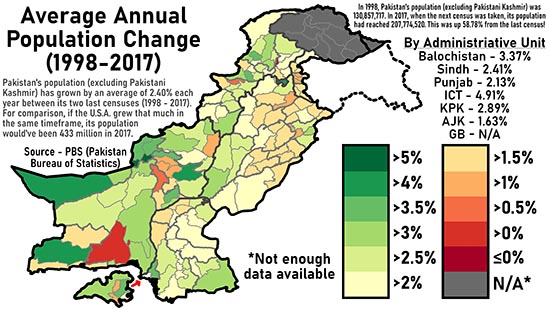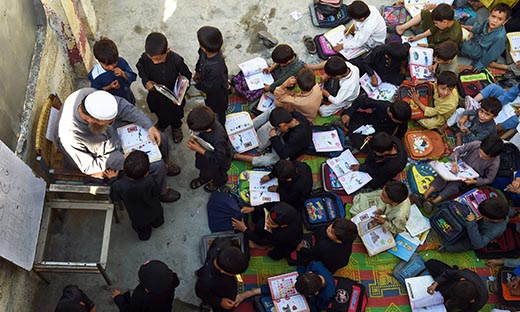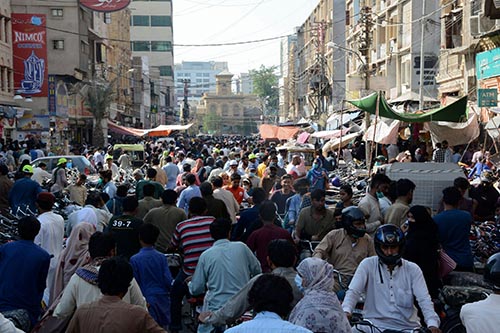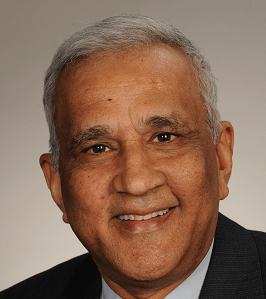According to Pakistan’s last census, conducted in 2017, the country’s total population was estimated to be 207.8 million people. However, since the release of the provisional results, the figure has remained disputed due to the alleged undercount of the population of Sindh, in general, and Karachi, in particular. All the political parties in Sindh, as well the media and academia, have been critical of the way the census was conducted. Consequently, the Federal Government has decided to conduct a fresh census in July 2022, the results of which are expected to be announced before the end of the year. The results of the 2017 census indicated that since 1998, the population growth rate in Pakistan has barely declined from 2.6 to 2 percent per annum, with varying growth rates from the urban and rural areas, provinces and districts. The censuses conducted in most countries usually undercount people. Therefore a post-census enumeration is conducted in most countries to determine the extent of undercount. For example, in the 2011 censuses, 2 percent of people in Australia, 2.5 percent in India and 4 percent in Bangladesh were undercounted. However, after Pakistan’s last census, no such exercise was undertaken. Thus, in Pakistan if the undercount was to the tune of 2.5 percent, it is likely that about 5.2 million people were not counted, which could mean that in 2017, the population of Pakistan had already reached about 213 million.

If the population of Pakistan had already reached 213 million in 2017, growing at the rate of 2 percent per annum, it means that during the last four years, about 4.25 million people have been added each year. Thus, the population of Pakistan at the beginning of 2022 has probably reached 230 million. This estimate is very close to 229.50 million in 2022, as estimated by Trading Economics global macro models, analysts and the United Nations. The United Nations estimates that, as in most other Asian countries, the population growth rate has declined to about 1 percent per annum. Pakistan’s population growth is also expected to decline in the coming years. However, even with the expected decline, according to the United Nations’ estimates, by 2030 Pakistan’s population will reach 263 million, as shown in table 1.

As we reach the end of 2022, Pakistan has to take care of an additional 4.5 million plus people. Within a year, the combined population of Rawalpindi and Peshawar; half the population of Lahore and one-third of the population of Karachi will be added to the population of Pakistan. This will result in multiple problems for an already overburdened country.
Thus, whether it is widespread illiteracy and poverty in the country, deteriorating civic amenities, poor health conditions, increasing crime rates in the cities, environmental pollution or water shortage for farming as well for household consumption, all have their roots in the rapid population growth. On the one hand, the average number of children born to illiterate women is one-third greater than those who are educated, on the other hand, most of the children born to illiterate mothers are also not enrolled in schools. Therefore, the number of illiterate persons has remained high. Nearly half of the population is classified as illiterate.
Similarly, several factors have been found to be associated with the dynamics of poverty. For example, larger household sizes and/or dependency ratio are associated with chronic poverty. Rapid population growth, especially among the poor segments of society — where women have too many children and too frequently — creates a situation whereby only limited resources are available to the families and thus till these children start earning, without any additional income the family becomes poorer. In this respect, the most vulnerable, namely women in reproductive ages and children, suffer the most. Thus, on the one hand, poor families have limited disposable income and on the other hand, as a consequence of too many children the family size is large, resulting in members remaining trapped in poverty which breeds further poverty. As the poor have more children, it further aggravates their situation. For example, due to inadequate resources, children are denied any education and many end up as child labour, earning meagre amounts, while women are denied the opportunity to lead a healthy life, which deprives them of the ability to earn a livelihood. Thus, the phenomenal increase in Pakistan’s population has had a highly adverse impact on the wellbeing of the people. Furthermore, due to a higher number of children in the family, the inheritance patterns have contributed to a decrease in the size of farm landholdings to the point where, according to the agriculture census, in the past two decades the number of farms under three acres — the minimum size for economic viability — has increased from 2.1 million to 4.8 million, resulting in an increase of farms under three acres from about 50 percent of all landholdings in the country to about 75 percent, leading to a widening gap in the incidence of poverty between the rural and urban areas of the country.
As shown in Figure 1, while the incidence of poverty in rural and urban areas till the mid-1990s was about the same, the latest information available indicates that the incidence has remained about the same in rural areas. However, it has declined substantially in the urban areas resulting in a wide gap in the incidence of poverty between the two areas. Furthermore, due to the increasing demand for food items, there is likely to be a shortage of eatables, which when imported, will result in a further increase in the prices of essential kitchen items. This will have a greater impact on the poor and vulnerable families.

Another consequence of high population growth is a youth bulge, usually defined as a high proportion of those aged 15 to 29 relative to the total population. Pakistan’s population of youth has doubled from about 35 million in 1998 to nearly 66 million today. Besides, about 30 percent of the population comprising those in the age group 15-29, there is an additional 35 percent, consisting of children below 15 years. Due to the migration of young people in search of employment, about 40 percent of the population of large cities comprises youth. On the one hand, the young population has a high potential for population growth and on the other hand, too many young people is a contributing factor to economic instability and social upheavals, especially when they are illiterate. A combination of national demographic trends and youth movements to cities often creates an urban youth surge of considerable magnitude.

A rapid population growth in Pakistan would have several consequences:
• It would require expansion of infrastructure and services to serve a larger population.
• Further, more school-age population, would make it harder to achieve educational goals.
• It would mean a less favourable age structure for economic development, due to fewer people in working ages.
• Constant rural to urban migration, would lead to further deterioration in the urban infrastructure and civic amenities.
• A further increase in the number of people below the poverty line, particularly in rural areas and those living in urban slums, and one catastrophic illness can push them into extreme poverty.
• Increasing disparity in social, economic and health status between the poor and the affluent class in the cities and between regions, could lead to social upheavals.
• Due to the increasing demand for food items, there is likely to be a shortage of essential eatables and other kitchen items, affecting the poor families more.

Apparently, one of the main reasons for the poor social indicators in Pakistan stems from unchecked population growth, which resulted in Pakistan meeting the targets of only 10 out of the 34 indicators of the Millennium Development Goals (MDGs). Pakistan is a signatory to achieve the 17 Sustainable Development Goals (SDGs), with 169 different targets, aimed at fighting poverty, reducing inequality and addressing climate change. They include goals such as quality primary and secondary education for all children, gender equality, and reduced child mortality, all of which have direct and indirect impacts on population growth. Population is not mentioned in any of the 169 targets, yet it is a decisive factor for global environmental change and future human wellbeing. However, there are SDGs which are directly relevant to population, such as good health and well-being, quality education and gender equality. Since population dynamics affect all other sectors, efforts to promote sustainable development that do not address population dynamics would continue to fail. This can be achieved through a set of policies which respect freedom and provide access to sexual and reproductive health rights, which could then contribute to a reduction in fertility, and advance education and empowerment of women. According to one of the studies done by the International Institute for Applied Systems Analysis in Vienna and the Asian Demographic Research Institute at Shanghai University, achieving the Sustainable Development Goals would significantly slow population growth. Population growth and its consequences need to be immediately checked on a war-like footing.

The writer is a Distinguished Senior Fellow at the School of Public Policy, George Mason University, United States.



